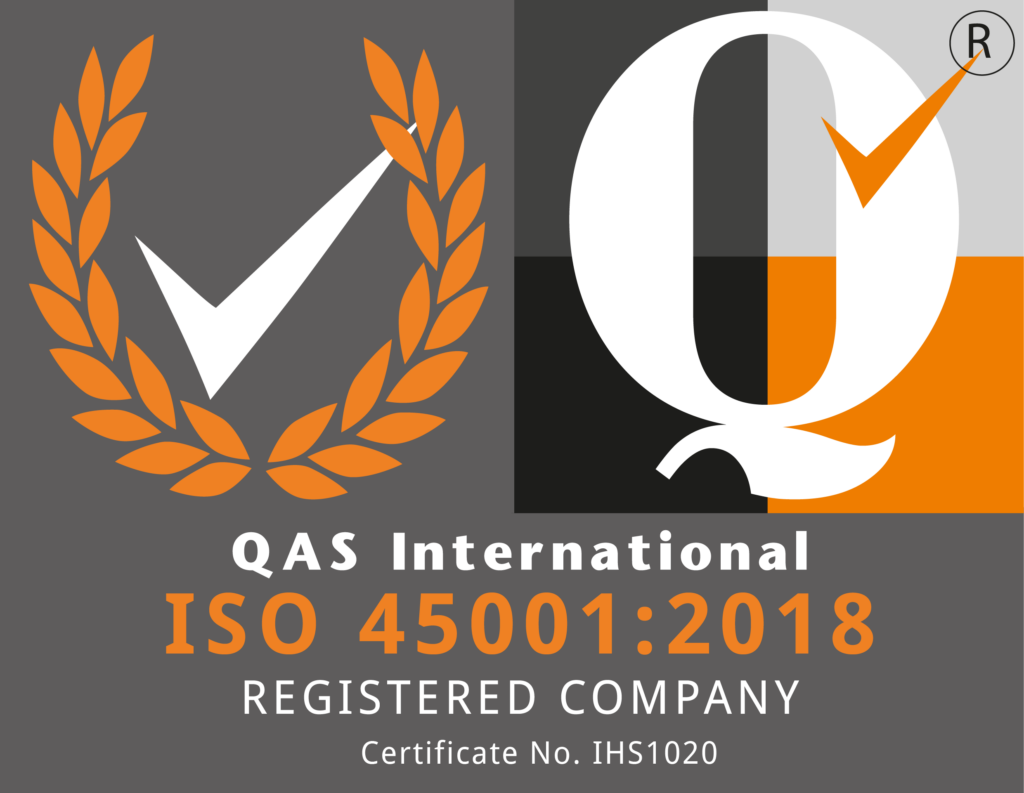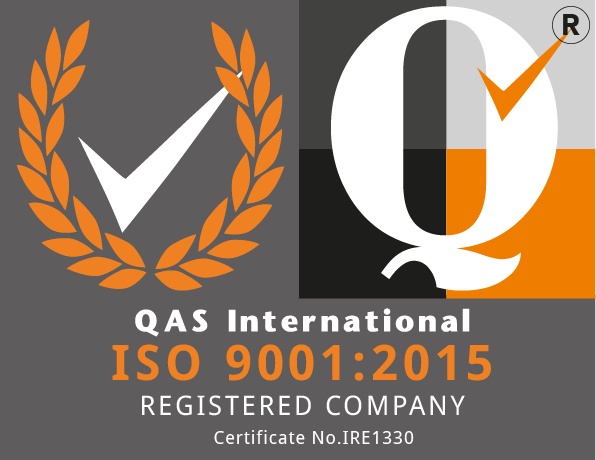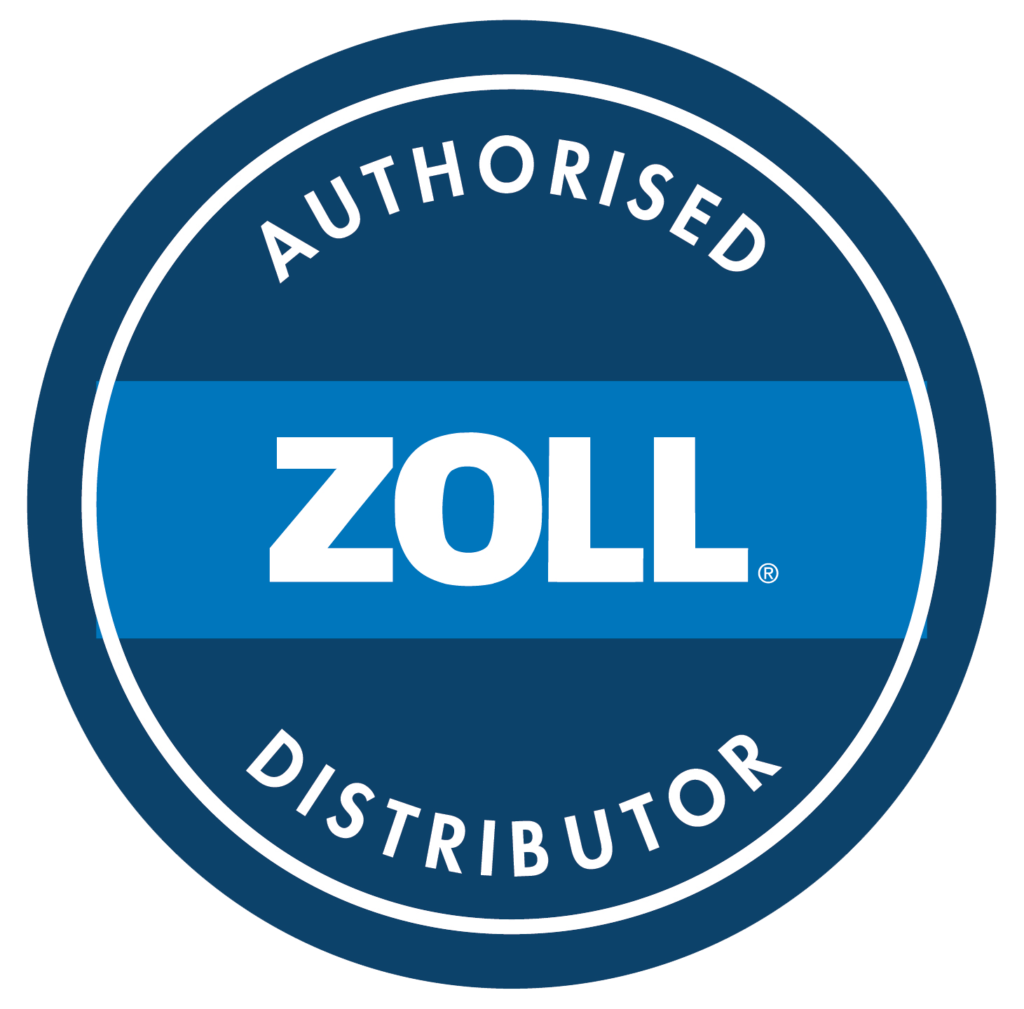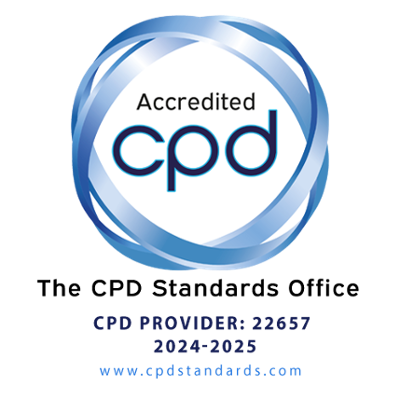The Nursing Home Fire, Health & Safety, and Emergency Management System 3 represents a comprehensive approach to ensuring the utmost safety and well-being of residents and staff in nursing home environments. This system encompasses all the components found in System 1 while significantly expanding on policies and procedures critical for addressing a broader range of health and safety concerns. Including a Health & Safety Policy lays the foundation for a safe working and living environment, detailing the commitments and responsibilities of all parties involved. Additionally, the Lone Working Policy and Management of Sharps and Needlestick Policy address specific risks associated with nursing home operations, ensuring staff are protected during potentially hazardous situations and procedures.
Additionally, this system introduces specialised policies such as the Meeting the Needs of the Residents with Challenging Behaviour Policy. This policy is crucial as it outlines approaches for managing and supporting residents safely and respectfully according to their needs. The Portable Appliance Testing (PAT) Policy and Procedure Incident Reporting Policy further ensures that all equipment is maintained to a high standard and that incidents are systematically reported and addressed to prevent recurrence. The Health & Safety Risk Assessments and Risk Management Policy are integral to this comprehensive system, providing a structured approach to identifying, evaluating, and mitigating risks within the facility. Together with the Safety Policy, Safety Statement, Smoking and Vaping Policy, and Health & Safety Risk Register, System 3 offers a robust framework for managing the complex safety and health challenges in nursing homes, ensuring that safety is a paramount concern and that all practices are in line with current regulations and best practices.
Health & Safety Policy
The Health & Safety Policy is the cornerstone of a nursing home’s approach to ensuring its residents’ and staff’s well-being and safety. This pivotal document clearly articulates the establishment’s unwavering dedication to creating and upholding a secure environment, fostering a safety culture that permeates every aspect of its operations. By delineating the specific roles and responsibilities assigned to staff members across various levels, the policy ensures that everyone is fully aware of their integral role in safeguarding the health and safety of all individuals within the facility. It lays down a comprehensive framework that guides the implementation of safety measures, training programmes, and emergency procedures, setting a benchmark against which all safety practices are measured and refined.
Furthermore, the Health & Safety Policy is dynamic and designed to evolve in response to emerging risks, regulatory requirements change, and safety protocol advancements. Regular reviews and updates to the policy guarantee that the nursing home remains at the forefront of best practices in health and safety management. This ongoing evaluation and improvement process underscores the facility’s commitment to meet and exceed the standards set by health and safety legislation. By implementing this policy, the nursing home aims to assure residents, their families, and regulatory bodies of its dedication to providing a safe, secure, and caring environment. In doing so, it establishes itself as a beacon of excellence in health and safety within the care sector.
Lone Working Policy
The Lone Working Policy is a critical component of a nursing home’s health and safety framework, meticulously designed to address and mitigate staff’s unique challenges when working alone. Acknowledging the heightened risks inherent in solitary work scenarios, the policy is tailored to safeguard employees who might find themselves in isolation, particularly during the unsociable hours of night shifts or within less frequented sections of the care facility. By establishing a robust risk assessment system, the policy ensures that potential hazards are identified and addressed proactively. It sets out clear communication and emergency response protocols, enabling staff to maintain a lifeline with their colleagues and management.
The Lone Working Policy underscores the nursing home’s commitment to creating a safe and supportive working environment for all employees, regardless of their working conditions. It is a testament to the value placed on staff safety and a mechanism for enhancing staff confidence and morale. Knowing that their safety is taken seriously and that measures are in place to protect them during vulnerable working conditions, employees are more likely to feel valued and, in turn, more committed to their roles. This policy, therefore, not only enhances the safety and security of the staff but also contributes to creating a positive and cohesive working culture within the nursing home.
Management of Sharps and Needlestick Policy
The Management of Sharps and Needlestick Policy plays a pivotal role in ensuring the safety and health of both staff and residents within the nursing home environment. It meticulously details the procedures and protocols necessary for the safe handling, usage, and disposal of sharps, such as needles, scalpel blades, and other medical instruments that pose a risk of puncture or laceration injuries. This comprehensive policy minimises the risk of sharps-related injuries, which can lead to severe infections and health complications. By establishing strict guidelines for using and disposing of sharp objects, the policy aims to create a safe working environment, significantly reducing accidental needlestick injuries. Training requirements are fundamental to this policy, ensuring all staff members have the knowledge and skills to handle sharps safely. This education covers the correct use of disposal containers, the importance of never recapping a needle, and the protocols for immediate action in the event of a sharp injury, including reporting procedures and access to post-exposure prophylaxis if necessary.
Furthermore, the policy underscores the nursing home’s commitment to maintaining the highest infection control and employee safety standards. Regular reviews and updates ensure that the policy aligns with the latest health and safety regulations and best practices in sharps management. This proactive approach to policy development and implementation reflects the nursing home’s dedication to safeguarding the well-being of its workforce and the residents in their care. Through the meticulous application of the Management of Sharps and Needlestick Policy, the facility adheres to legal and ethical standards. It fosters a culture of safety and responsibility, demonstrating a deep commitment to the health and safety of everyone within the nursing home community.
Meeting the Needs of the Residents with Challenging Behaviour Policy
Incorporating the Meeting the Needs of the Residents with Challenging Behaviour Policy into the Nursing Home Fire, Health & Safety, and Emergency Management System 3 significantly enriches the framework’s approach to ensuring comprehensive care and safety. This policy is instrumental in guiding staff on effective strategies for managing residents who may exhibit challenging behaviours due to conditions such as dementia. It underlines the importance of person-centred care, wherein each resident’s needs and preferences are acknowledged and respected, tailoring care approaches that honour their dignity and rights. The policy protects residents from harm by focusing on de-escalation techniques and advocating for minimal restraints. It fosters an environment where their well-being is paramount. This aspect of the System 3 framework highlights the nursing home’s dedication to upholding the highest standards of care, ensuring that all residents, regardless of their behavioural challenges, are treated with compassion and respect.
Furthermore, the seamless integration of this policy within the Nursing Home Fire, Health & Safety, and Emergency Management System 3 reflects a holistic approach to safety and care provision. It recognises that resident safety extends beyond physical well-being to emotional and psychological health. Training staff to understand and manage challenging behaviours effectively is a vital component of this policy, equipping them with the skills to handle difficult situations confidently and empathetically. This proactive approach minimises stress and anxiety for residents and staff, creating a calmer, safer living environment. By embedding such specialised care strategies into the broader emergency management and safety protocols, the System 3 framework ensures that nursing homes are well-prepared to meet the diverse needs of their residents, thereby enhancing the quality of care and safety for everyone within the facility.
Portable Appliance Testing (PAT) Policy
Incorporating the Portable Appliance Testing (PAT) Policy within the Nursing Home Fire, Health & Safety, and Emergency Management System 3 framework and aligning it with the Health and Safety Authority (HSA) guidelines is a strategic move that significantly amplifies the safety protocols in nursing homes. This policy is critical in safeguarding residents and staff from potential electrical hazards by ensuring that all portable electrical appliances undergo rigorous inspections and testing at regular intervals. The detailed delineation of the frequency of checks, coupled with a systematic process for labelling and documenting the condition of appliances, ensures a well-organised approach to electrical safety. The policy also specifies clear procedures to be followed when an appliance fails a safety test, ensuring that any equipment posing a risk is promptly removed or repaired. By adhering to this policy, nursing homes demonstrate their commitment to maintaining high safety standards in line with the expectations set by the HSA, thus fostering a safe living and working environment.
Moreover, integrating the PAT Policy with the HSA‘s guidelines into the Nursing Home Fire, Health & Safety, and Emergency Management System 3 underscores the nursing home’s proactive stance on electrical safety. This alignment enhances the credibility of the nursing home’s safety practices and ensures compliance with national safety regulations. The emphasis on regular and documented checks is a preventive measure, significantly reducing the likelihood of electrical accidents and promoting a safety culture. This approach protects the physical well-being of residents and staff. It contributes to peace of mind for families, knowing that their loved ones are in a facility that prioritises safety. By implementing and adhering to the PAT Policy as part of the broader System 3 framework, nursing homes set a benchmark for electrical safety in healthcare settings, reflecting their dedication to excellence in safety and care provision.
Procedure Incident Reporting Policy
Integrating the Procedure Incident Reporting Policy into the Nursing Home Fire, Health & Safety, and Emergency Management System 3, in alignment with Health Information and Quality Authority (HIQA) Health and Safety Authority (HSA) guidelines, significantly strengthens the approach to managing and mitigating risks within nursing homes. This policy mandates a thorough and systematic method for reporting, documenting, and analysing incidents, including accidents, near-misses, and breaches of safety protocols. By ensuring that every incident is recorded, the policy not only facilitates a comprehensive analysis aimed at identifying underlying causes but also aids in developing strategies to prevent a recurrence. The clear guidelines for investigation and follow-up actions ensure that each incident is addressed promptly and effectively, fostering a culture of transparency and continuous improvement. Moreover, this policy reinforces the nursing home’s commitment to compliance with HIQA and HSA regulations, showcasing a proactive stance in maintaining a safe and secure environment for residents and staff.
Furthermore, the Procedure Incident Reporting Policy is a cornerstone for cultivating a learning culture within the nursing home, where insights from incident analyses contribute to ongoing staff education and safety enhancements. By systematically capturing and examining the details of each incident, the facility can pinpoint areas for improvement and implement targeted interventions. This alignment with HIQA and HSA standards underscores the facility’s dedication to upholding the highest safety standards and positions it as a leader in adopting the best health and safety management practices. The proactive measures endorsed by this policy safeguard the well-being of individuals within the nursing home and contribute to the broader goal of enhancing safety standards across the healthcare sector. Through its integration into the System 3 framework, the policy exemplifies the nursing home’s holistic approach to safety, where learning from incidents paves the way for a safer, more resilient care environment.
Health & Safety Risk Assessments
Incorporating Health & Safety Risk Assessments into the Nursing Home Fire, Health & Safety, and Emergency Management System 3 epitomises a robust approach to ensuring a safe environment for residents and staff. This integral component demands the execution of regular and thorough evaluations to pinpoint potential hazards lurking within the nursing home premises. By methodically assessing the probability and impact of various risks, the policy effectively facilitates the implementation of preventive and corrective measures tailored to mitigate these identified threats. Such a proactive stance on health and safety underscores the commitment of the nursing home to not only react to incidents but to anticipate and neutralise potential dangers before they escalate into actual problems. This forward-thinking approach ensures that safety protocols evolve in tandem with the changing dynamics of the nursing home environment, thereby maintaining a consistently high standard of safety and care.
Moreover, integrating Health & Safety Risk Assessments within the broader Nursing Home Fire, Health & Safety, and Emergency Management System 3 framework aligns perfectly with the overarching objective of creating a holistic safety culture. This systematic procedure of identifying, evaluating, and managing risks is a cornerstone for strategically planning safety measures across the facility. By embedding such assessments into the routine operations of the nursing home, the management demonstrates an evident, unwavering dedication to safeguarding the well-being of all individuals in their care. This diligent approach meets the regulatory requirements of health and safety oversight bodies. It significantly enhances the trust and confidence of residents, their families, and staff in the nursing home’s safety practices. Through continuous monitoring and updating of risk assessment protocols, the Nursing Home Fire, Health & Safety, and Emergency Management System 3 ensures that the facility remains a haven, exemplifying excellence in health and safety management.
Risk Management Policy
The Risk Management Policy, as integrated into the Nursing Home Fire, Health & Safety, and Emergency Management System 3, establishes a comprehensive and structured approach towards the governance of potential risks within the nursing home environment. This policy aligns with the Health and Safety Authority (HSA) guidelines, ensuring the risk identification, evaluation, and management process meets national safety standards. The policy fosters an all-encompassing safety net by encompassing all operational facets of the nursing home, from resident care practices to facility maintenance and staff training. It underpins the commitment to address risks and anticipate and mitigate them proactively. The emphasis on continuous improvement within the policy encourages a dynamic process where feedback and incident analyses lead to refinements in safety measures, thereby cultivating a culture where safety and well-being are paramount.
Furthermore, the Risk Management Policy’s alignment with HSA guidelines ensures that nursing homes comply with regulatory requirements and are leaders in setting safety benchmarks in healthcare environments. This policy is the backbone for creating a resilient framework capable of adapting to the evolving nature of healthcare risks. By prioritising safety and embedding it into the nursing home’s operations ethos, the policy protects residents and staff and builds trust among families and the wider community. The systematic approach to managing risks, underscored by regular reviews and updates in line with HSA recommendations, ensures that the nursing home remains at the forefront of best practices in health and safety. This proactive stance on risk management is integral to maintaining a safe, secure, and nurturing environment for all members of the nursing home community.
Safety Statement
The Safety Statement, a key element within the Nursing Home Fire, Health & Safety, and Emergency Management System 3, articulates the nursing home’s unwavering commitment to maintaining the highest health and safety standards. This dynamic document provides a detailed account of the hazards inherent to the nursing home environment and outlines the strategic measures to mitigate these risks. Its purpose extends beyond a mere declaration; it serves as a living framework, continuously evolving to reflect changes in the operational landscape of the nursing home, ensuring that risk control measures remain practical and relevant. Regular reviews and updates are integral to this process, allowing the nursing home to adapt to new challenges and incorporate advancements in safety practices. The nursing home ensures compliance with national safety standards by aligning this process with the Health and Safety Authority (HSA) guidelines. It reinforces its commitment to creating a secure and healthy environment for residents, staff, and visitors.
Moreover, the Safety Statement’s role in the broader context of the Nursing Home Fire, Health & Safety, and Emergency Management System 3 is pivotal in fostering a culture of safety and awareness throughout the facility. It is a cornerstone for engaging staff at all levels in the collective responsibility for health and safety, encouraging an atmosphere where proactive risk management is embedded into daily operations. The document’s alignment with HSA standards underscores the nursing home’s dedication to operational excellence and its proactive approach to safeguarding the well-being of its community. The nursing home exemplifies a responsive and responsible approach to health and safety management by continually refining the Safety Statement in response to regular risk assessments and feedback loops. This elevates the standard of care provided and positions the nursing home as a model of best practice in the sector, demonstrating a comprehensive and dynamic commitment to health and safety.
Smoking and Vaping Policy
Integrating the Smoking and Vaping Policy within the broader framework of the Nursing Home Fire, Health & Safety, and Emergency Management System 3, in adherence to the guidelines set forth by the Health Information and Quality Authority (HIQA), showcases a comprehensive approach to managing the health risks associated with smoking and vaping in the nursing home setting. This policy not only acknowledges the inherent health hazards posed by smoking and vaping but also takes decisive steps to mitigate these risks by establishing designated areas for such activities. By delineating specific zones where smoking and vaping are permitted, the policy effectively balances the needs and rights of individuals who smoke or vape with the imperative to protect non-smokers from second-hand exposure. Furthermore, the policy’s provisions for compliance with legal regulations regarding smoking in public spaces underscore the nursing home’s commitment to upholding public health standards and ensuring a safe, inclusive environment for all residents, staff, and visitors.
Moreover, the Smoking and Vaping Policy’s alignment with HIQA‘s standards reflects a broader commitment to excellence in health and safety within the nursing home sector. By proactively addressing the challenges associated with smoking and vaping, the policy contributes to the creation of a healthier living and working environment, one that prioritises the well-being of every individual in the facility. Regularly reviewing and updating this policy, in line with evolving HIQA recommendations and legislative changes, ensures that the nursing home remains at the forefront of public health initiatives. This dynamic approach to policy development and implementation enhances the quality of care and reinforces the nursing home’s reputation as a responsible and forward-thinking care provider. By meticulously integrating the Smoking and Vaping Policy within the Nursing Home Fire, Health & Safety, and Emergency Management System 3, the facility demonstrates a holistic and nuanced understanding of health and safety, setting a benchmark for best practices in the care sector.
Health & Safety Risk Register
The Health & Safety Risk Register forms a pivotal component of the Nursing Home Fire, Health & Safety, and Emergency Management System 3, acting as a crucial instrument in the strategic management of health and safety within the facility. As a dynamic and comprehensive record, the Risk Register meticulously catalogues all identified risks within the nursing home, including detailed assessments and the specific control measures implemented to mitigate them. This ongoing documentation and evaluation process ensures that the nursing home identifies potential hazards and actively develops and refines strategies to manage these risks effectively. Regular reviews and updates of the Risk Register are imperative, enabling the facility to adapt its risk management strategies in response to any changes in the nursing home’s environment or operational practices. This adaptability ensures that the health and safety protocols remain robust and relevant, safeguarding the well-being of residents and staff alike.
Moreover, the Health & Safety Risk Register fosters a safety culture and continuous improvement within the nursing home. By systematically tracking and addressing risks, the facility demonstrates a proactive health and safety management approach, underscoring its commitment to providing a secure and healthy environment. Regularly updating the Risk Register in light of new information or changes in the facility exemplifies the nursing home’s dedication to maintaining the highest standards of safety and care. This structured approach to risk management not only aids in achieving compliance with regulatory requirements but also enhances the overall safety culture within the nursing home, contributing to a more informed, vigilant, and resilient community. The Risk Register, therefore, is not just a document but a fundamental practice within the Nursing Home Fire, Health & Safety, and Emergency Management System 3, embodying the facility’s ongoing commitment to excellence in health and safety.










